 Wednesday - June 27, 2012
Wednesday - June 27, 2012
those magnificent men in their flying machines
This is really more a photo essay then a news story.
Love this kind of thing and hope readers enjoy the old pix along with me.
There is nothing for me to say except, catch the link and the story and enjoy.
How trainee pilots got into a few unfortunate scrapes as they took to the skies (and sometimes rooftops) at one of Britain’s first aviation schools
By AMY OLIVERThis is the moment a post master was disturbed in the bath - by a plane crash-landing onto his roof.
But far from being a rare incident, the pilots at one of Britain’s first aviation schools in Hampshire seemed prone to accidents.
As these astonishing pictures show, prangs, bumps and complete nose-dives into ditches were almost a daily occurrence at New Forest Flying School, which opened in 1910.
The hapless trainee pilot in this shot ended up on the post office roof after overshooting the landing strip at the school near East Boldre. Miraculously no one was hurt.
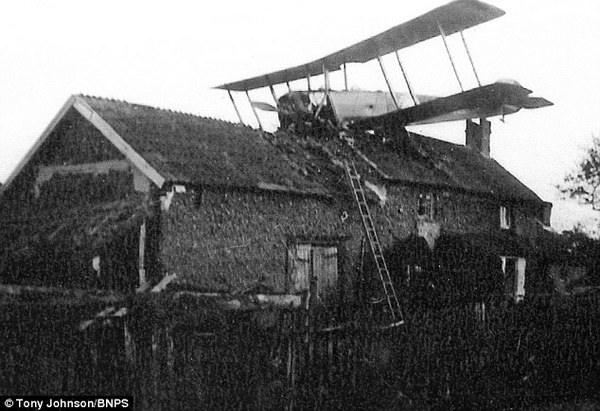
This plane flown by a trainee pilot from nearby New Forest Flying School ‘undershot’ the strip to land on the Post office roof. The postmaster, in the bath at the time, was not amused but amazingly nobody was seriously hurt
Drexel and McArdle chose the unlikely site as the location for the school because it was flat and empty. The planes were taken to the nearby Brockenhurst station by train and were towed from there by horse and cart to the aerodrome.
Lord Montague of Beaulieu - now the home of a motor museum - encouraged the opening of the school. He also tried to persuade the War Office that flying would become an important part of the military and they should invest more in it.
Nothing happened, but in World War One it was realised that flying was important and the aerodrome re-opened.
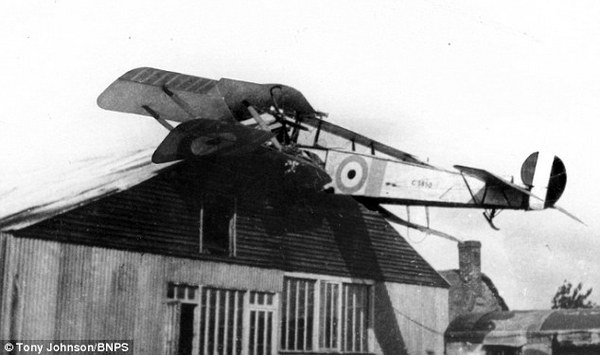
THERE’S MORE TO SEE AND READ HERE
Posted by peiper
Filed Under: • planes, trains, tanks, ships, machines, automobiles • UK •
• Comments (1)
 Wednesday - June 20, 2012
Wednesday - June 20, 2012
1928 Sades super car
Recently, Drew made some excellent comparisons and pointed out many of the flaws in design and safety of the cars known today as classics. Perhaps not every single one of them was a death trap, but judging by the wrecks I had posted, the cars seemed to fall apart like they were made of glass.
I wonder if that was more the case with American cars as opposed say to German ones. Or the Brits and Italians. I really haven’t a clue not having read up on it.
I just like the way many of them looked, and would not mind having Jay Leno’s money so I could own a collection like his. And I would LOVE to own a Cord like the red model that sits on top of my pc. That’s about as close as I will ever get to a classic beauty.
Anyway, I ran across this and thought it would make a nice contrast with Drew’s super car he posted yesterday. Nice cars no doubt but I’d still rather have a Cord.
Here. Take a look at this old Mercedes. Someone will have fun restoring this one, but it may take buckets of cash.
Can anyone tell me what that black knob thing in the middle of the steering wheel is?
The supercar of its generation: 100mph 1928 Mercedes unearthed after 60 years of rusting away in a garage is worth £1.5million
Car runs ‘perfectly’ despite not having been driven since the early 1950s
By DANIEL MILLERThis rare 1928 Mercedes, unearthed after 60 years sitting in a garage without seeing the light of day, is expected to sell for a staggering £1.5million at auction.
Described as the supercar of its generation, the ‘S’ Type model was one of the world’s fastest vehicles when it rolled off the production line in 1928, easily reaching speeds in excess of 100mph.
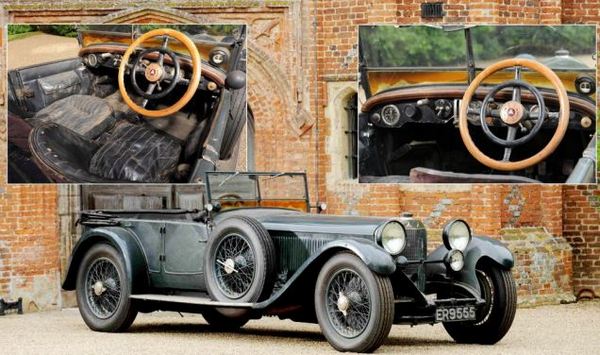
It’s Ferdinand Porsche designed engine and hand crafted chassis made it one of the earliest luxury sports cars ever mass produced. Incredibly despite having been locked away since the 1950s, it still runs perfectly.The cobweb clad car - first registered on the roads in May 1928 - is set to go under the hammer at Bonhams’ Goodwood Revival sale on September 15.
Automotive expert, Rupert Banner, said: ‘At a time when motor cars in original condition and with impeccable provenance are appreciated more than ever, this one-owner car offers an unrepeatable opportunity for collectors.
THERE’S A LOAD OF PHOTOS AND MORE TO READ HERE
Posted by peiper
Filed Under: • planes, trains, tanks, ships, machines, automobiles •
• Comments (4)
 Tuesday - June 19, 2012
Tuesday - June 19, 2012
Save Money With The New Subayota BRZ

This is the new Aston-Martin Vanquish. With a 520hp 5.9L V12, it can go 0-60 in about 4.4 seconds. It gets 11mpg around town, 22mpg highway, and cost $255,000. Top speed is over 200mph.
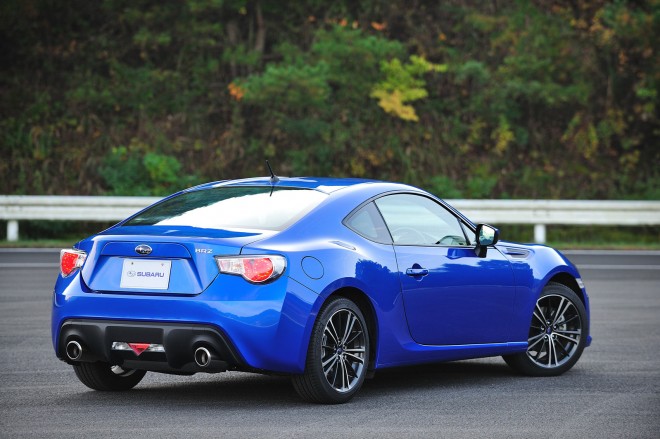
This is the new Subaru BRZ. Built by a cooperative effort between Subaru and Toyota, the BRZ has a 200hp 2.0L flat 4, and can go 0-60 in about 6.6 seconds. Top speed is around 135mph. It gets 25mpg around town 34mpg highway, and costs about $25,000.
Subaru + Toyota = Subayota, which is much better than Toyota + Chevrolet = Toyolet. Flush that one!
2/3 the car for 1/10 the price, with nearly double the gas mileage. Looks quite a bit like the A-M too, just smaller. Pretty slick trick. And just wait until next year or the year after, when Subaru’s 2.5L turbo motors sneak their way under the hood and add another 65hp.
I saw one of these the other day, in the parking lot by the Korean restaurant we went to. I’ve always been a car spotter, but I haven’t followed the car magazines in years. I had no idea this thing even existed. It’s quite impressive looking. It’s small, and low, and very swoopy looking. From some angles it strongly reminds me of the old Opel GT. From other angles is says 240-Z loud and clear. Yet the grill seems like something from Maserati, and the little wing on the back lid reminds me of Ferraris from the mid 70s.
Toyota is selling their nearly identical version, called the FR-S, under the Scion brand name. It’s a 2-seater in reality, although it does actually have a back seat. Yeah right. Anyone older than 5 can’t fit back there. It looks like a really fun car to drive, and my bet is you won’t see yourself coming the other way 50 times a day, if ever. 2-seaters don’t sell well in America. They’re a very niche market. The BRZ is bigger than the Mazda Miata, bigger than the Honda S2000, but smaller than the Hyundai Genesis Turbo. The flat 4 engine sits low in the front, and for a Subaru the BRZ is unique: it’s rear wheel drive only.
Early reviews are very positive. It’s not a race car. It’s not a street racer or some Tokyo Drift thing. It doesn’t look like an econo-box with a coal shovel hood scoop on the front and a massive wing stolen from Boeing’s spare parts bin on the back like every other performance Subaru. I gather that tall people can get inside, and folks with bottoms larger than an 11 year old girl’s can sit comfortably in the seats. It’s a stylish drivers’ car with excellent handling and reasonable power that probably doesn’t cost a fortune to insure. Well built with a reasonable ride. A sports car for the rest of us, that you can drive every day. After all, you wouldn’t want to take your Aston Martin out in the rain, would you?


Posted by Drew458
Filed Under: • planes, trains, tanks, ships, machines, automobiles •
• Comments (1)
 Thursday - May 31, 2012
Thursday - May 31, 2012
toys for billionaires
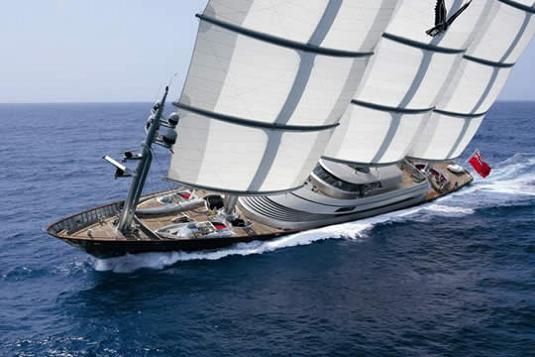
The Maltese Falcon is the 3rd largest sailing yacht in the world. Purchased second hand at the fire sale price of only $97.36 million, this 305 foot long ultra-luxury craft is a modern square rigged ship, with super high tech sails that let it make 20 knots on wind power alone. Loaded down with every possible luxury and water toy imaginable, including 7 smaller boats and mini-submarines, the yacht spends most of it’s time being rented out, for a mere $607,000 a week. The owner, one of the world’s most successful hedge fund managers, is too busy working 112 hours a week to spend time sailing.
A Glorious panalopy of photographs can be found here.
Posted by Drew458
Filed Under: • planes, trains, tanks, ships, machines, automobiles •
• Comments (0)
 Wednesday - May 16, 2012
Wednesday - May 16, 2012
how’s this for a do it yourself project?
Wow .... take a look at what this fellow has done.
Talk about a do it yourself project. Brilliant.
It started with this.
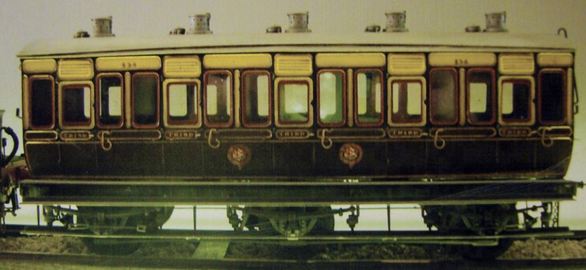
An old (130 years) rail coach which wasn’t allowed to be moved. So, his ex FIL built a home around it and got this.
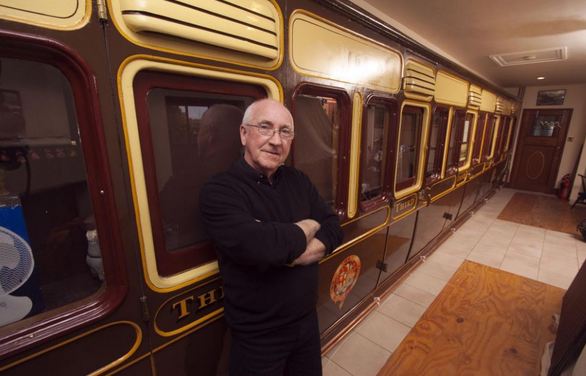
But apparently the coach his FIL bought needed lots of restoration and lots and lots of work. Which this man took on.
Is this the strangest home in Britain? The bungalow that’s built around a 130-year-old railway carriage
Jim Higgins’ ex father-in-law had to build around the carriage because bizarre planning rules said it had stood for so long it could not be movedMr Higgins is now restoring the former Great Western Railway carriage to possibly open to the public
By MATT BLAKE
When it comes to building a comfortable bungalow, Jim Higgins has got the inside track.
The retired transport manager, 60, has one of the most unique houses in Britain… because it is built around a real railway carriage.
The property in Ashton, Cornwall, is a fully functioning house but bizarrely has the fully restored 130-year-old Great Western Railway car within its walls.
Mr Higgins, 64, originally from Buckinghamshire took over the property from his former father-law Charles Allen who was forced to build it around the railway carriage because bizarre planning regulations meant the train could not be moved.
Mr Higgins said: ‘The railway carriage was lived in by a local woman Elizabeth Richards from 1930.
‘It was known as Lizzies Place to when she died in 1966.
‘It then stood empty for a number of years until my ex-father-in-law came down looking for somewhere to retire.
All the other photos are HERE and I think you might be impressed.
Posted by peiper
Filed Under: • OUTSTANDING ACHIEVEMENT • planes, trains, tanks, ships, machines, automobiles • Success Stories • Talented Ppl. • UK •
• Comments (3)
 Friday - April 20, 2012
Friday - April 20, 2012
Me and the Plancius
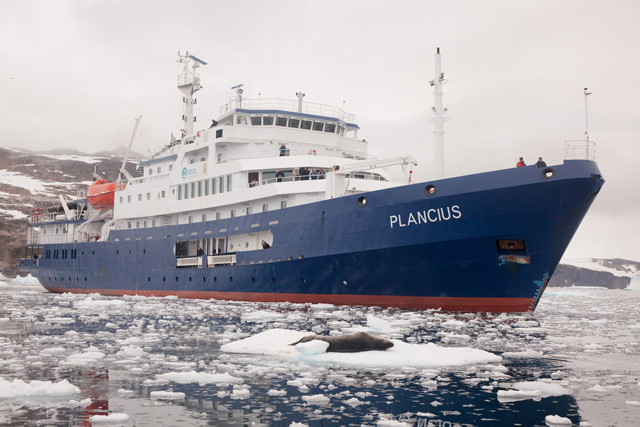
Antarctic Cruise Ship stuck in the middle of nowhere with busted engine, going nowhere fast.
Oceanwide Expeditions’ cruise ship ‘Plancius’ anchored off South Georgia, after repeated propulsion failures, awaits relief ship
Trouble started 12 days into a 31-day journey from Ushuaia, Argentina, one of the southernmost cities in the world, to Ascension Island, an isolated volcanic island near the Equator.
After returning from a small island, the ship suffered a complete power failure. Ship’s engineers were able to fix the problem and course was set for Tristan de Cunha heading north in order to avoid a fierce storm system. En route, the ship suffered another engine failure.
It was thought the ship could complete the cruise around the islands, but the situation took a turn for the worse when the engines could no longer reach full power. The ship then returned to Grytviken in the South Georgia Islands where it currently sits in the harbor.
I guess it’s all part of the adventure when you take one of these exploration cruises out in rough seas to the middle of nowhere. And it truly is the middle of nowhere. The town of Ushuaia is south of the Straits of Magellan, on the south coast of Tierra del Fuego, alongside the Beagle Channel. Land of cold, wet, and windy. But it’s paradise compared to South Georgia Island, which is about 800 miles east south east of the Falklands Islands, smack dab in the middle of the Atlantic Ocean halfway between South America and Africa, and pretty much south of both of them. Not quite utter desolation; South Georgia Island is inhabited, kind of. It’s just so far off the beaten track that it’s nearly invisible, with only a half dozen or so ships visiting per year.
Right now the Plancius is docked at the fisheries research station at King Edward Cove in GrytViken South Georgia, hardly a mile from where the great Antarctic explorer Ernest Shackleton is buried. Eventually a rescue ship will get out there and bring the passengers to Uruguay. Meanwhile everyone is safe, although probably quite bored, and a bit cold. It’s currently a balmy 42°F there with 15mph winds blowing. A lovely fall day.

I personally feel dead in the water because both my bowling teams got sorely beat this week. And this week was the semi-finals in both leagues. Damn.
We managed to win the first game in Greed League, which clinches us for 3rd place. But the 4th place team we bowled didn’t make it easy. Heck, they beat the daylights out of us, their 5 guys rolling a 1250 score in the first game with their anchor guy AJ throwing a 300. And we won that one, by a paper thin 12 pins. Game 2 was just as high scoring, and they got that one by 18. Come game 3 we thought they’d be worn out, but no. They rallied even harder, AJ threw ANOTHER 300 (he had an 835 for the night), and they clobbered us by more than 100. So we went 2-5. Not that it matters; they can’t climb past 4th, we can’t fall past 3rd, and since the 1st place team slammed the 2nd place team 5-2 and locked up the win, the 2nd place guys remain only 2 up on us. So we have to face them next week, and we’ll have to win 5 to steal 2nd from them. Two games and wood. Which is going to be tough, because they’ve slaughtered us all year. At least I bowled well in that league. Nothing special, a 557 series, all games in the mid 180s, 10+ over average. So I’ve got to do what I can to try and get some life back in my old ball.
Things went worse in Cheap League. One of our guys couldn’t make it and didn’t request post bowling, so we had to use his absentee score, 10 off his average. And we played the ringer team and had to give them 24 pins handicap. That’s so wrong. So we’re down 34 to start. Naturally both their guys threw awesome games, 50 or more over their paper averages, and on par with how they can actually bowl when they want to. I threw for crap, not even making a 500 series. My old ball is mostly dead, and the helpful guy who runs the alley was having me use loaner balls. Thanks, that’s nice, but trying out 2 new balls in the play-offs is about the last thing you want to do. So I sucked, and we went down 2-5. OTOH, it would have gone 2-5 even if I’d made my average. They creamed us in the first two games. Since 1st is now locked in this league, as well as 2nd, we’ll play these same guys again next week. Thrills. So we might drop to 6th or something if they flail on us again. Not that it matters in Cheap League; there is only a tiny bit of prize money for 1st. Everyone else gets ice cream. Hey, we rose up from 9th, knocked these guys out of 1st which they’d held for 15 weeks, held onto 1st ourselves for 4 weeks, and we’ll finish in the top half or better. Good enough. Can I have extra fudge sauce with that ice cream?
I’ve got the new ball I want all picked out, almost. It’s either going to be a Storm Frantic or a Storm Fringe, very little difference between them aside from oil conditions, and I can get either one of them at a huge discount when summer league starts up ... 3 weeks after these leagues end. Rats.
Posted by Drew458
Filed Under: • Bowling Blogging • planes, trains, tanks, ships, machines, automobiles •
• Comments (1)
 Wednesday - April 18, 2012
Wednesday - April 18, 2012
Cats Too
First it was Obama eating dogs. Now it’s cats. No, not Obama eating cats, although that would not surprise me but I have no proof and haven’t even heard such a rumor yet. But big cats. Made of steel. Fast ones too. Here ya go, in response to Peiper’s email about some rumor of some giant Chinese catamaran aircraft carrier in the works. Relax, that one is just rumor. For now. But this next one is one bad ass looking boat. Me want!
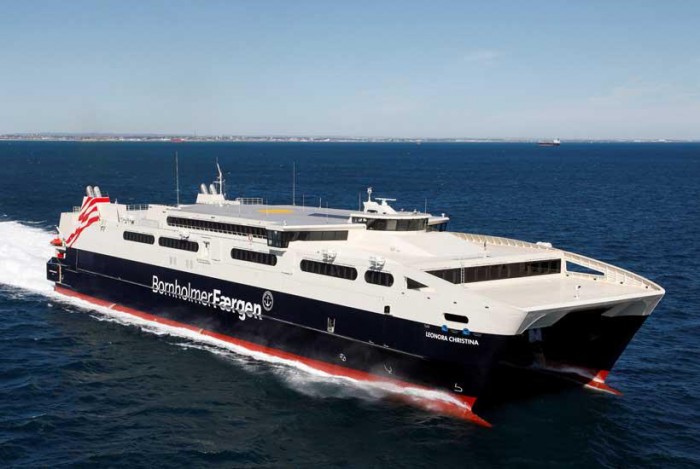
May 18, 2011 Austal’s largest catamaran built to date, the 113 metre “Leonora Christina”, was recently handed over to her owners, marking completion of construction of the high speed vehicle-passenger ferry at Austal’s Henderson shipyard.
“Leonora Christina” was constructed for Danish company Færgen (formerly Nordic Ferry Services) and is due to depart Austal’s Henderson shipyard for Denmark this week, where it will be operated by Bornholmer Færgen, a subsidiary of Færgen.
...
“After participating in recent sea trials, I am satisfied that “Leonora Christina” has fulfilled its speed requirements, while its proven seakeeping capabilities will ensure maximum passenger comfort throughout the 90 minute journey from Bornholm to Ystad,” said Senior Captain Schow.
Austal Chief Executive Officer, Andrew Bellamy, congratulated employees at Austal’s Henderson shipyard on the completion of “Leonora Christina”, commenting that the vessel will soon be the pride of Bornholmer Færgen’s fleet.
Austal was awarded the contract to build “Leonora Christina” in April 2009, following a competitive international tender process which saw Austal utilise its in-house design team and experience to develop a highly customised vessel design that met all of Færgen’s requirements for the route. “Leonora Christina” has also been built to comply with stringent Danish regulations, covering environmental noise, wave-wash and exhaust emissions, as well as ergonomic working arrangements for the crew and strict fire and safety standards.
Seating for the vessel’s 1,400 passengers is spread over the upper and bridge decks. Ample room and luxury fittings are evident throughout the vessel’s refined, high quality interior, which reflects contemporary Scandinavian design aesthetics. Natural lighting and timber finishing deliver a feeling of light and space throughout the vessel, with large skylights located in the vessel’s atrium completing the look.
...
The vessel’s three vehicle decks offer a total capacity of 300 truck lane metres, or a maximum of 357 cars, which are accessible via both bow and stern ramps, ensuring efficient ‘drive through’ loading and unloading of the vessel, thereby keeping turnaround times to a minimum.
Austal is a ship building company in Perth Australia. The Christina, 112.6m long, 26.2m wide, displacing 10,371 tons looks more like an oversize racing motorboat than a staid ferry. I love the design.
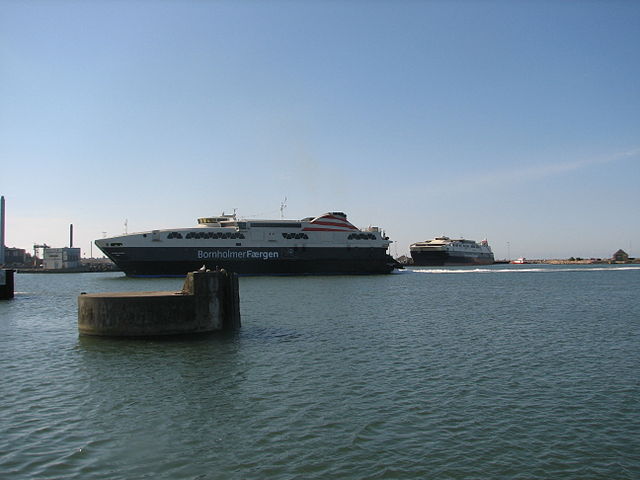
She is currently performing the daily ferry run between Rønne (Bornholm in Denmark) and Ystad in Sweden, barring a few early teething issues. The ferry company operates several other similar but smaller catamaran ships as well. More pics and info at Wiki.

At first there was some concern about the name of the ship, given who Leonora Christina was and what she did and how people feel about that today, but they took a vote and this name one. Or, as they say in Danish, “Navne Dramaet om ny Bornholmer Færgen er slut” (new name drama for Bornholm Ferry is over).
Bornholm’s new fast ferry will be named after King Christian 4’s daughter Leonora Christina. It is common after a vote in which 9,340 people have cast their votes, which ended last Friday. The result of the referendum were published Monday dinner. Over 50 percent of those who voted, voted for Leonora Christina, according to TV2 Bornholm.
Thus the ship painter on the sunny island does not work in this game. For ferry is a short time ago over the place at the shipyard in Australia. And even then was the princess’s name painted on the bow and stern. However, there arose a massive protest from opponents who believed that Leonora Christina’s national traitor because of his marriage to Corfitz Uldfeldt who sat on the Swedish side, since the Peace of Roskilde was signed, and Denmark had to refrain Skåne, Halland, Blekinge and Bornholm.
The vote was printed by the company Bornholm ferry after protests emerged. But now a majority then determined that the ferry’s name must remain as originally proposed.
As far as I know, the Leonora Christina is the largest operational catamaran anywhere. Daewoo is building one nearly 10 times larger, the Pieter Schelte, to work on undersea pipe, but that ship is taking a very long time to get built.
Posted by Drew458
Filed Under: • planes, trains, tanks, ships, machines, automobiles •
• Comments (0)
 Friday - April 06, 2012
Friday - April 06, 2012
Semper Paratus
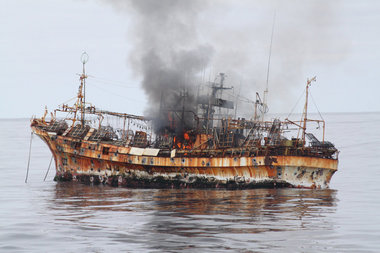
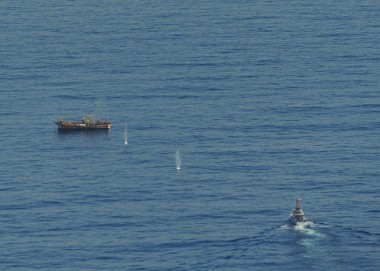
A U.S. Coast Guard cutter poured cannon fire into a Japanese ghost ship that had been drifting since the last year’s tsunami, sinking the vessel in the Gulf of Alaska and eliminating the hazard it posed to shipping and the coastline. The cutter’s guns tore holes in the 164-foot Ryou-Un Maru on Thursday, ending its long, lonely journey across the Pacific that began when the deadly tsunami set it floating more than a year ago.
japan-tsunami-ghost-ship.jpgU.S. Coast Guard, The Associated PressA plume of smoke rises from the derelict Japanese ship Ryou-Un Maru after it was hit by canon fire by a U.S. Coast Guard cutter on Thursday in the Gulf of Alaska. The Coast Guard decided to sink the ship dislodged by last year’s tsunami because it was a threat to maritime traffic and could have an environmental impact if it grounded.The crew pummeled the ghost ship with high explosive ammunition, and the derelict Ryou-Un Maru soon burst into flames, and began taking on water, officials said.
This is all over the news today. The derelict ship had a couple tons of fuel oil aboard and was drifting into US waters. It was a hazard, so the decision was made to sink it. Some Canadians tried to claim the wreck for salvage, but when they couldn’t tow it they left, and the Coasties got to work, shooting the thing full of holes with their 25mm Mk38 chain gun. The target caught fire, and once most of the fuel had burned off, the cutter put the fire out, then sunk the ship. Minimal harm done to the environment, yay.
The Canadian boat left, and once it was about 6 miles from the Japanese vessel, the Coast Guard began to fire, first with 25 mm shells, then a few hours later with ammunition twice that size.
Great work, and a job well done.
But I’m pissed off at the media.
It’s too easy to find the choppy video of this event online. And everybody is running the story and the pictures, all over the world.
And while everybody credits the Coast Guard for the pictures and the video, and while everybody mentions the name of the derelict ship and how it was in the scrapyard awaiting the breakers when the tsunami hit and washed the hulk out to sea, almost nobody mentions the name of the Coast Guard ship involved. That’s not right.
So I went digging. And it was a lot of work. But finally I found that the ship that did the job is the Anacapa, WPD-1335, a 110 foot Island Class patrol boat based out of Petersburg Alaska, in service since late 1989. Here she is:
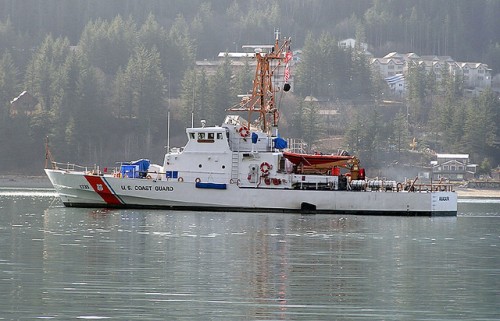
So kudos for a job well done.
But the news stories all share the same problem. “then a few hours later with ammunition twice that size” is kind of impossible, unless every article on the Island Class boats is out of date or just plain wrong. The Island Class boats are only armed with a single 25mm gun. There hasn’t been a Coast Guard ship of any size with 50mm or larger guns on it in service since the early 60s. Oops. Those things weigh tons. So whatever they used to finish the wreck off and sink it, it sure wasn’t a larger mounted cannon. But it is entirely possible that the Anacapa now carries the Mk19 40mm grenade launcher. They aren’t very big, nor very expensive, and the 40x53 shell has a range of about a kilometer. Plenty enough for a little patrol boat like this. And such a gun would be awesome against small pirates or drug runners. Even the M203 launcher would do it, and those mount to the M16 rifle. So I guess 40mm is close enough to “twice the size” of 25mm. It’s just that as a firearms enthusiast, it always bugs me that no reporter ever asks “hey, what kind of gun is that?” and just copies off the government press release.
I don’t know if the Anacapa is an “A” class, “B” class, or “C” class model of the family. The “C” class boats have the one chain gun, a pair of .50 BMGs, and a pair of 7.62 LMGs. So it’s possible the journalists got their guns wrong, as they almost always do, and that the initial fire into the wreck was with .50 bullets. API rounds would go right through the rotting metal walls of the ship and could easily set the fuel on fire. But trying to sink a ship with 25mm guns? Oh sure, lots of fun, and about the only chance the crew will ever get to use their MK38 so who cares if it takes all day? SHOOTEX! SINKEX!! Waa hoo!! But we’re really talking a 1 pounder here, and that isn’t very much boom, no matter how many rounds you can cook down the barrel on target. Whereas a 75mm gun would take about 3 rounds to do the job, maybe 4. So I’m guessing they’ve got a grenade gun on board.
Posted by Drew458
Filed Under: • Military • planes, trains, tanks, ships, machines, automobiles •
• Comments (1)
 Saturday - March 17, 2012
Saturday - March 17, 2012
A Lovely Toy
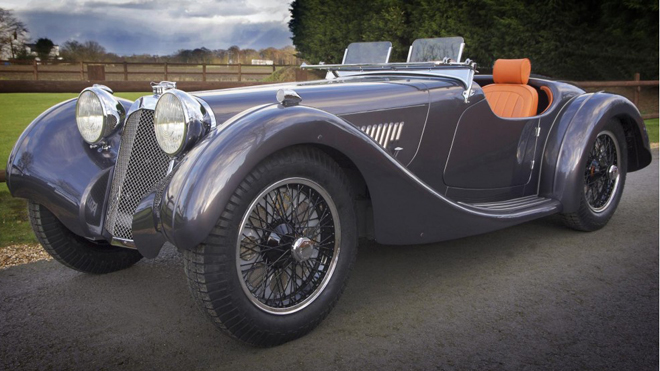
With more than just a gentle nod to Atalanta’s heritage, it is the objective of this venture to bring this most innovative pre-war sports car concept up-to-date, by acknowledging 72 years of automotive evolution, yet remaining true in spirit and sympathetic to the style and function of the original Atalanta sports car designs.
A traditionally coach-built pre-production prototype is currently being developed that remains true to original Atalanta design principles of ‘Innovation, Style and Performance’ and it is scheduled to be unveiled Spring 2012, 75 years after the first Atalanta car was announced.
75 years after its demise, the Atlanta car company is back up and running, and bringing their modern incarnation of their 1937 Sports Tourer to market. Completely bespoke as the English say, it will have a hand crafted aluminum body over an ash wood frame. Modern upgrades like a reliable high output small engine, a 5 speed overdrive manual transmission, high performance disc brakes and a few safety features lacking on the original - like brake lights - sum up the modernization. Just about everything else is as close to the original as possible.
Just revived from a 75-year slumber last fall, Britain’s Atalanta sports car brand has now launched its first new car—except it’s a 75-year-old design.
Called the Atalanta Sports Tourer, the car was first shown to the public on March 5, 1937. But despite its aged design, the modern Sports Tourer has been modernized--a bit.
While the car keeps its tall, narrow tires for ride comfort and driver feel, says Atalanta, the majority of the components that make up the car are new, with 85 percent being unique to the Atalanta. It’s not clear which components are shared, or what they’re shared with.
The body itself is still hand-formed aluminum over an ash (wood) coach-built frame.
Underneath, the steering, suspension, and critical castings are modern evolutions of the original bits. The chassis is aluminum, and, according to Atalanta Motors, the whole car weighs around 1600 pounds. It rides on a fully independent suspension supported by driver-adjustable dampers at all four corners. Interestingly, the first Sports Tourer also had an all-independent suspension and was available with adjustable dampers dubbed “Telecontrol”; the name carries over to the modern car’s system. Four-wheel disc brakes with four-pot calipers front and rear are fitted to the new Sports Tourer, replacing the original’s drum brakes.
While the originals came with your choice of a normally aspirated or a supercharged engine in either 1.5L or 2L size, topping out at about 100hp, the new one will most likely be powered by Ford’s 2.5L 4 banger, making 185hp. Which means this little buggy will have plenty of zip.
In its two-year run, Atalanta managed to produce some truly cutting-edge cars, equipped with such modern advances as fully independent coil spring suspensions, adjustable dampers, hydraulic brakes, a semi-automatic gearbox and a twin-spark cylinder head.
A 1939 review of the Atalanta proclaimed the car was “beyond criticism,” and that “the Atalanta has the tenacious quality of a racing car when cornering.” It was good enough for the factory to take home the team prize in the 1939 Welsh Rally, which would prove to be the brand’s most significant racing achievement before the war halted production.
The original Atalanta Motors company launched in 1935, but the dawn of World War II scuttled production nearly four years later. When the company shuttered its doors in 1939, it had only built 21 cars in total. Today, fewer than half survive, and fewer yet are actually functional.
...
“Our aim is to reproduce the positive, enjoyable characteristics of vintage motoring in a reliable and usable manner that is relevant to today’s driving environment,” says company co-founder Martyn Corfield. “Atlanta is about style, innovation, and performance.”
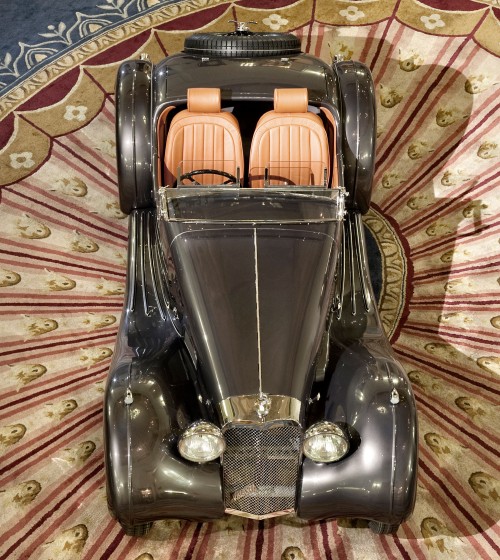
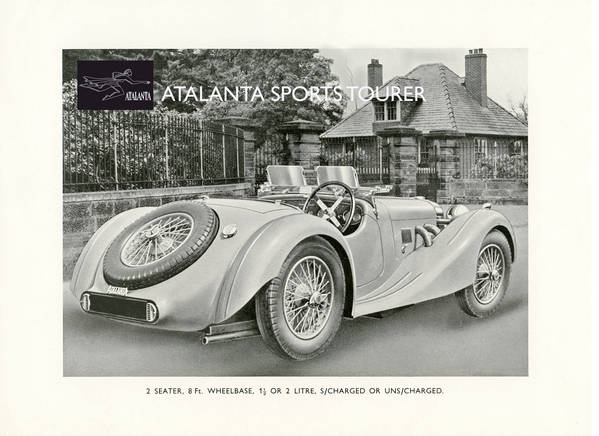
Posted by Drew458
Filed Under: • planes, trains, tanks, ships, machines, automobiles •
• Comments (2)
 Tuesday - March 13, 2012
Tuesday - March 13, 2012
A Dragon Rises
This is another one of Drew’s long winded, esoteric, and perhaps dull and boring posts on things that catch my interest online. I’ll put up a couple of pictures, and the major links, which some of you might follow. But from my end this post is somewhere between a book report and a research project. I spent at least 5 hours on this yesterday, running down dozens of links and learning a whole bunch of stuff, from history to construction techniques to archaeology. And the little you see here took me hours to write. And I still have no idea how I got on the subject to begin with. So here goes ...
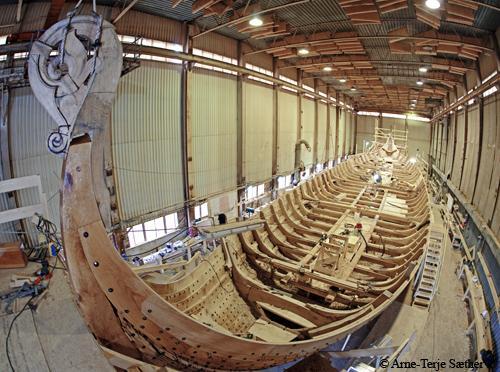
Read all about it, with lots of pictures and links to videos, right here.
Even more iconic than a German Luger, just about everyone knows what a Viking longship looks like, even though the Vikings have been gone for around 900 years now. It is as if this kind of ship spotting is engraved in our genes; Vikings! Danger! and we remember across the generations. In all the world only the tiniest handful of real longships still exist, perhaps half a dozen in all the museums everywhere. But while we know the shape, we really don’t know the size, and the (admittedly ethnocentric) anthropologists, archaeologists, and history expects have pushed the opinion that these fearsome warships really weren’t all that big; that the ships described in the old Norse sagas were greatly exaggerated and only existed at the bottom of several large tankards of mead. After all, look at the pictures on the Bayeaux Tapestry, a linen and wool history book made at the peak of the Viking Age.
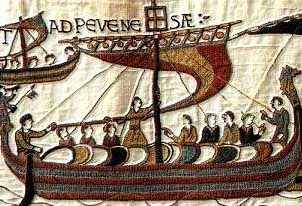
Even allowing for some artistic license, the longships shown are not all that big. A dozen oars per side. We’re talking a crew of maybe 40-50 at most. Not several hundred. No way close to the great ships of the sagas that held 1000 men. Flights of fancy. And in over a century of digging them up, the largest one ever found was about 98 feet long. The Oseberg, one of the best preserved examples, a mere 78 feet. (This was a woman’s burial. Those barbaric horrid Vikings had better Equal Rights than most of the world at that time. And since this was a funerary ship, I should say they had pretty good Equal Rites as well.) The Gokstad, a more seaworthy design, just 85 feet.
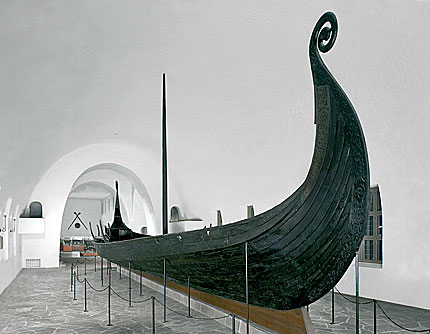
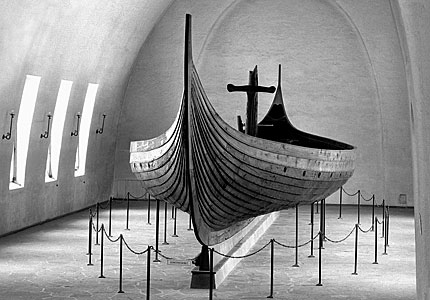
Although both of these ships were built in the 800s, Early Viking Age, both are pretty much the same size as the ships shown in the Bayeaux Tapestry, Late Viking Age. And the Saxon burial ship from 700, the “pre-Viking” era, the Sutton Hoo, was 89 feet long. The Sutton Hoo ship was loaded with treasure, but the ship itself was never found. It rotted away in the clay after being buried, but left such a fantastic imprint in the soil that every last plank and nail can be seen, right down to the grain of the wood. The design of the Sutton Hoo was very very close to that of later Viking ships.

No one questions that these ships could sail. No one questions that they could sail for really long distances either. In 1893, a reconstruction of the Gokstad ship sailed from Scandinavia to the World Fair in Chicago:
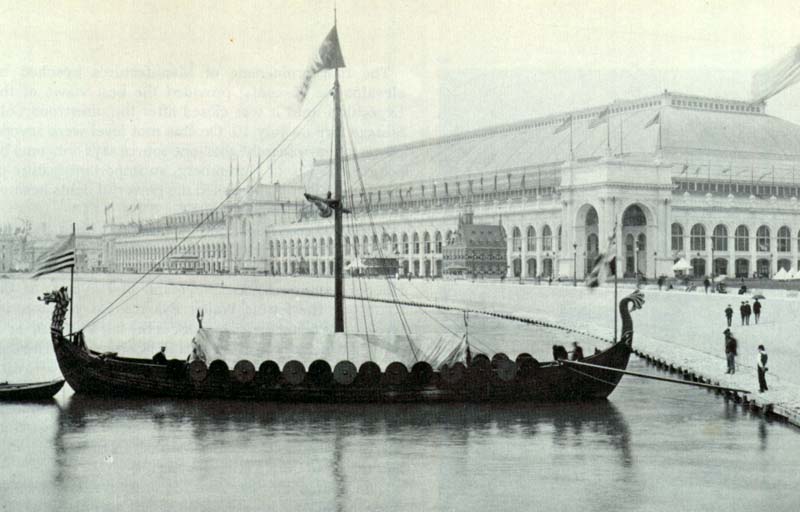
The Vikings had many different styles of ships, from dinghys to fishing vessels to traders, but none were so large as the longships. And the longest of those ever found or drawn was under 100 feet. So it was “settled science”, even though translated documents recorded a mustering agreement - that in emergencies, to defend the realm, more than 370 naval longships could be called up read to fight, plus privateers - perhaps 1000 total - and the average size of those ships was 25 sesse, which meant 50 oars, which was a bigger ship than anyone now alive was willing to believe in. These academic guys are so rigorous. Almost snobs. It’s all a lie until they can stub their toes on one. Bloody Vikings? Phooey. Bloody professors. Even the “Viking Age” is snobbishly ethnocentric: it begins in June 8, 793 when the first attacks happened in England. As if the Vikings hadn’t figured things out before that, and gone around beating up their neighbors right across the Baltic. Hella no, it wasn’t official until they came after the UK. After that it was a scourge.
So for more than 100 years after the first real live Viking longship was found, 90-100 feet was the accepted upper size limit, and the old Sagas were all pish and tosh. It was “proven” that they couldn’t be any bigger because the lightly built longships would break in two from loading and wave bending. Primitive barbarian giant canoes really, what what.
The toe stubbing happened in 1997, and it happened in a way that could make you believe old “Lucky” Leif Eriksson was smiling down from Valhalla.
Denmark’s Viking Ship Museum sits on the edge of the sea at the end of the Roskilde fjord, a few dozen miles northwest and the next isthmus over from Malmo. It was built there because 5 sunken Viking ships were found nearby in 1962. The ships had been scuttled 950 years ago to protect the town from attack by another bunch of Vikings.
The later years of the 11th century were tough and troubled times. The Vikings therefore established a series of blockades in Roskilde Fjord to protect Roskilde, the then capital of Denmark, against attack by sea.
The five ships on display in the Viking Ship Hall were scuttled to form a blockade in the Peberrende, a natural channel in Roskilde Fjord near Skuldelev, some 20 km north of Roskilde. That is why they are known as the Skuldelev ships.
They were excavated from the sea bed in 1962. The blockade was surrounded by iron sheet piling and the site then drained. In less than four months, the five ships were successfully excavated in thousands of pieces. There then remained the colossal task of conserving the timber fragments and, not least, of assembling all the pieces of the jigsaw to recreate five Viking ships.
The find contained five different ship types, which together provide a unique impression of Viking shipbuilding skills and craftsmanship.
The museum is a popular place, with about 200,000 visitors per year. They have several of the Skuldelev ships on display, quite a number of other Viking exhibits, and they have a boat yard where they build new wooden boats based on the original Viking designs. And then sail them. So popular a place that in the mid 90s they needed more room. When they started digging the foundations for their new building they came up with more than just dirt. They hit paydirt. Nine Viking ships buried under the soil, right in their own backyard.
Roskilde 6 was found – together with eight other ships from Viking times and the Middle Ages – during the construction of the Museum Harbour for the Viking Ship Museum in 1997. The ship had been hauled up into shallow water in Roskilde’s Viking harbour area and partially broken up. Therefore, only part of the bottom was preserved. Despite this it is one of the most remarkable Viking ship finds yet seen.
The ship they named Roskilde 6 was 36 meters long. Nearly 115 feet. 39 pairs of oars. 78 rowers plus crew; it probably carried 100 men. That’s assuming just one man per oar. Double that if they had two. It is by far and away the largest Viking ship ever found, though only the lower planks and ribs still exist. And it looks like those old barbarians had the “it’s too big, it will break instead of bend” thing all figured out, as the Roskilde 6 was built in sections, with the aft section attached to the center one with some rather impressive joinery ... that just might work like a hinge. The 6 was built at some point after 1025, during the reign of King Canute, towards the end of the Viking Age. 1025 was before the Norman Invasion of 1066, thus before the Bayeaux Tapestry was stitched. Canute was the Great Viking King, forming an empire of Norway, Sweden, northern England, and Denmark.
Now, you’re probably saying, gee whiz Drew, that’s just another 16 or so feet. Maybe 35 feet compared to the smaller ones. True. But it’s a volume thing; this ship was probably 1.4 times the mass of the smaller ones. Half again as big. And by the standards of the sagas, it wasn’t even close to large. It was only a little bit bigger than the standard medium sized ship. A big snekke (snake), but barely a real draken (dragon). If the sagas aren’t too overblown, there once were longships afloat in the 150-175 foot range. 100 oars, a crew of 500? That’s more than half the size of a WWII destroyer.
And that brings us back, finally, to the good ship Harold Fairhair. Named for the Viking king who unified the tribes and became the first king of Norway, around the year 890. Though famous in Norse sagas, Harold gets snubbed by the Ivory Tower Know It Alls too. By the most amazing coincidence, this new ship under construction is also 114 feet long. Exactly the same size as the Roskilde 6. The ship they said that couldn’t exist. Harold is being built with a bit blunter shape, less pointy at both ends and perhaps a bid broader in the middle. That will accommodate the double oarsmen. It is thought that the Roskilde 6 was actually very narrow, but they only recovered the lower planks and the keel so I have my doubts about that.
At a hundred and fourteen feet of crafted oak, twenty-seven feet on the beam, displacing seventy tons, and with a thirty-two hundred square foot sail of pure silk, this magnificent ship will indeed be worthy of a king.
The Dragon Harald Fairhair will have 25 pairs of oars. It is necessary to have at least two people on each oar to row the ship efficiently. That will give a crew of at least 100 persons, yet the craft should be able to be sailed by only twelve.
I’m really looking forward to this, to seeing a real Sea Dragon fly across the water.

Latest news: new tiny viking ship burial found in Scotland: The grave of a single Viking found near the shore, in his little boat. The 16 foot ship had sailed from Norway to Ireland to Scotland with just 1-3 people aboard.
Lastly: If you want to go a-viking, the Harald is looking for a crew. But you’ve got to know your sailing, and you’ve got to be tough. Real tough; this is an open boat with no roof. And no bathroom. The shakedown cruises will start this summer, and a trans-Atlantic voyage is planned for next year. That will be a journey from somewhere in Vinland all the way to the Black Sea; from the coast of Canada across to Greenland and Iceland, then Europe down to the Straits of Gibraltar, across the Mediterranean to Istanbul, and up into the Black Sea. Then on to Sevastopol or up the Danube or the Dan? Who can say? But all these places have seen the Vikings before.
Posted by Drew458
Filed Under: • planes, trains, tanks, ships, machines, automobiles •
• Comments (2)
 Friday - February 03, 2012
Friday - February 03, 2012
Truck U
A House committee passed a measure Thursday maintaining current tractor-trailer sizes and weights for three years until a study can be completed on the potential costs incurred by allowing longer and heavier trucks on U.S. roads.
...
The original legislation, which includes authorizing about $260 billion over five years for federal highway programs,contained a controversial provision allowing heavier tractor-trailer trucks on highways by increasing the federal weight limit from 80,000 pounds to 97,000 pounds. In some cases, it would have allowed 126,000-pound trucks onto highways.
...
The legislation also would allow the largest rigs, which comprise two and sometimes three trailers, to be as much as 10 feet longer—a total length of more than 100 feet.
“All trips begin and end on local roads. The cost of fixing these roads is in the hands of local taxpayers. Heavier trucks will damage local roads, which are not built to handle the extra weight,” said Rep. Lou Barletta, R-Pennsylvania, who offered the amendment with Rep. Jerry Costello, D-Illinois.
“Local roads will become potholed, buckled, and broken much more quickly. They will need to be repaired and replaced sooner, and the cost for that will fall squarely on local governments and local taxpayers,” Barletta said in a statement.
But the Coalition for Transportation Productivity said this is a matter that has already been studied and it’s time to put heavier trucks on the road.
“It really is ‘Groundhog Day’ today because this very committee asked the Transportation Research Board to study this same issue back in 1998, and the Board strongly endorsed truck weight reform,” said CTP Executive Director John Runyan in a statement.
“There is no need to commit further study to this truck weight proposal. Voluminous academic research and practical on-the-ground experience has proven that states should have the option to put more productive, six-axle trucks on interstates.
The plain truth is that we have become a nation of trucks. We don’t use the railroads for anywhere near as much hauling as we once did. Trucks have the advantage of carrying your goods right to your door, instead of having to take another truck and go down to the RR depot to get your stuff. But today’s trucks are hard pressed to carry as much as it does. There is a strong need for more trucks and for bigger trucks. Another 15-60% load won’t change their mpg all that much; in the long run it is less expensive to carry more on fewer trips than it is to carry the current amount on more trips. And the government just put a stop to that idea. One more way this administration is (pardon the trucking pun) putting the brakes on any economic recovery.
It really is as simple as doing some basic arithmetic. An 18 wheeler tractor trailer distributes the load amongst 16 wheels. A 3 axle trailer would have 12 wheels; connected to the same tractor you’d get a 22 wheeler with 20 wheels carrying the load. Heavy load tractors already exist that have a 4th axle on the tractor that can be lowered to put 2 more wheels down on the road. That’s a 24 wheeler, with 22 wheels doing the hauling. Each tire has a set of brakes I believe, so the more tires you use the more braking you can achieve.
Current 80,000lb maximum load ÷ 16 wheels = 5000lb per wheel.
Suggested 97,000lb maximum load ÷ 20 wheels = 4850lb per wheel. The 3 axle trailers put 3% less weight on the road per wheel, and it’s the load per wheel that matters.
Suggested 126,000lb jumbo maximum load ÷ 20 wheels = 63000lb per wheel, a 23% increase over what the 18 wheelers haul around right now. Terrible. Bad bad bad. Is there any way out? Maybe. Let’s try it with a 4 axle tractor:
Suggested 126,000lb jumbo maximum load ÷ 22 wheels = 5727lb per wheel, which is still 15% more weight per wheel than what we see on the highways every day. Maybe we should go with a bit less weight?
Alternate 110,000lb jumbo maximum load ÷ 22 wheels = 5000lb per wheel. This is a 37.5% load increase over today’s 18 wheelers, but it has the exact same wheel loading as they do. Solution 1!
Alternate 100,000lb maximum load ÷ 20 wheels = 5000lb per wheel. This is a 20% load increase over today’s 18 wheelers, using today’s regular tractors and a 3 axle trailer, but it has the exact same wheel loading as current 18 wheelers do. Solution 2!
I think I just saved the government 3 years and many millions of dollars. They can cut me a check for 5% of the projected study cost, thanks. In the meantime they can throw some money at Goodyear to come up with a recap truck tire that stays together better. We have “tire-gators” all up and down the highways. I’ve seen them blow and have had to dodge the flying 100lb chunks of smoking rubber. No fun there at all. There has to be a better way to build a truck tire.
Ok, I’m not a fan of the triple trailer concept. I’ve never actually seen one, but they have those “road train” things out in the outback of Australia. More power to them, and perhaps they could be Ok here in the USA in the farm belt, where there is almost no other highway traffic. We have tandem rigs here in NJ, and that’s already quite a lot of truck, even though both trailers are of the shorter variety (40 or 45 feet I think, whereas large single trailers are up to 53 feet). Two 45s is already 90 feet, plus rig. Would a 53 and a 45 for a total of 98 feet plus rig be all that much different? I don’t think so.
Of course, one solution would be to only use trucks for source to hub and hub to destination haulage, and use trains for hub to hub. They are far more efficient on a per pound basis. Pity we let most of our railroads go to wrack and ruin 50+ years ago, and then built suburbia where the tracks used to be. Railroad freight cars are rated to carry 263,000lb, which is more than the weight of two of the suggested 97,000lb capacity trailers AND at least one of their tractors.

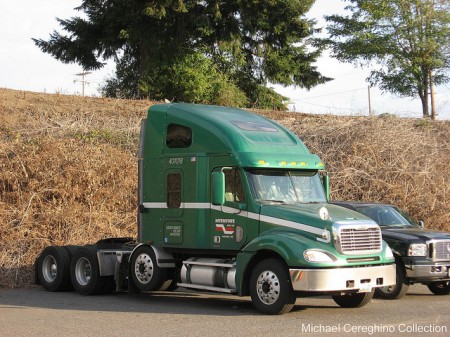
Posted by Drew458
Filed Under: • planes, trains, tanks, ships, machines, automobiles •
• Comments (4)
 Friday - January 27, 2012
Friday - January 27, 2012
Ro/Ro Row Your Boat
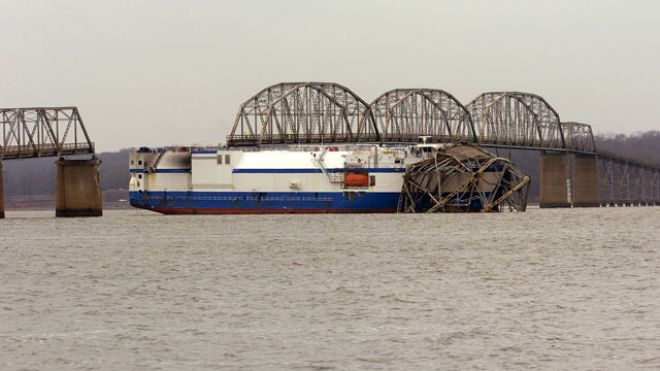
The Foss M/V Delata Mariner, launched in 1999, is a 312 foot long, 50 foot tall, 80 foot wide Roll On/Roll Off (Ro/Ro) carrier ship with an 8,000HP engine and just one job: it ferries giant missile engines, the Delta IV boosters used on the Space Shuttle and other rockets, from the Boeing factory in Decatur, Alabama down the Tennessee-Tombigbee waterway, into the Mississippi, past New Orleans and then across the Gulf of Mexico either around Florida and up to Cape Canaveral, or through the Panama Canal and north to Vandenburg AFB in California. And that is all that it does. It’s a rocket ship, even though it has a top speed of just 15 knots. Rocket transport ship that is.
Thursday night the ship was heading upriver, and it looks like it tried to go under the wrong span of the Eggner Ferry Bridge. Big mistake. The impact tore out one span of the bridge and rolled it up like a rug, roadway and all. Some hours later another span of the 1932 bridge also fell. No deaths or injuries; the old bridge doesn’t see much traffic and was nearly empty in the middle of the night when the accident occurred. One local man was driving on the bridge, but he managed to stop his pickup truck just in time.
The ship doesn’t even look all that damaged, but it will take some time to clean up the mess and fix the bridge.
AURORA, Ky. – State officials are inspecting what’s left of a southwestern Kentucky bridge that partially collapsed when it was struck by a cargo ship that was too tall to pass under the structure.
Pieces of the Eggner Ferry Bridge at Aurora, Ky., are strewn across the front of the motor vessel Delta Mariner as it sits at the site of a Thursday accident.
Two spans of the Eggner Ferry Bridge at US 68 and Kentucky 80 were destroyed Thursday night by the Delta Mariner. No injuries were reported on the bridge or in the boat.
The ship was traveling upriver toward the Kentucky Lock and Dam when it hit the aging steel bridge, which was built in the 1930s and handles about 2,800 vehicles a day.
On Friday morning, the front of the ship remained tangled with steel from the bridge and hunks of asphalt from the roadway. Kentucky Transportation Cabinet officials said inspectors began an in-depth review of the bridge at daylight.
“There is a point where they may have to disassemble the structure completely or use a crane to move the debris,” Jim LeFevre, highway department chief engineer, told The Paducah Sun. “That ship is going to be there for some time.”
Transportation Cabinet spokesman Keith Todd said he believes most [italics: Drew458] of the navigational lights were functioning on the bridge at the time of the impact.
“Our people talked to the Coast Guard as recently as Tuesday to update them on the navigational lights, and we believe most of them were working at the time of this wreck,” Todd said. “Although the green bridge marker lights on the bridge should have been visible from both sides of the bridge.”
The 312-foot-long cargo ship was built to navigate shallow waterways and was carrying empty rocket booster cores, Coast Guard Lt. Jason Franz told The Sun.
Interestingly, but only as one of those odd coincidences, the Foss company, which is a shipbuilder, a transportation support conglomerate, and the largest barge company on the west coast, also supports bridge construction. They helped build the Tacoma Narrows bridge, and they’ve also just released their new “green” hybrid tugboat, which utilizes their new and patented hybrid propulsion system.
The Eggner Bridge is in western Kentucky, southeast of Paducah, in that thin corner of the state between Tennessee and Illinois. No blame is being assessed at this point; perhaps the green lights were not lit under the higher spans of the bridge where this ship should have gone.
The transportation cabinet said the bridge was in the process of being replaced, and pre-construction work began months ago.
Another one of those happy coincidences I guess.
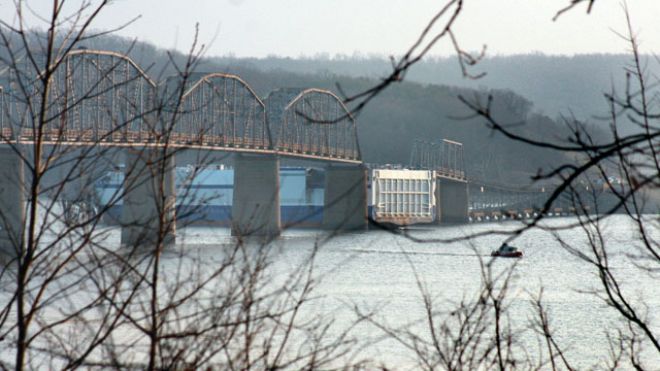
Posted by Drew458
Filed Under: • planes, trains, tanks, ships, machines, automobiles • Space •
• Comments (3)
 Wednesday - January 04, 2012
Wednesday - January 04, 2012
But of course
It’s 15 degrees out. Damn.
So of course the muffler strap on my car chose today to break, popping open the exhaust system and making my car sound like some old motorboat.
I’m going to freeze my A off out there fixing it. Assuming I can find the part locally. Stupid muffler strap on Saturns is the one and only piss poor part on the cars; they rot out every 3 years. Everything else soldiers on forever.
Posted by Drew458
Filed Under: • Daily Life • planes, trains, tanks, ships, machines, automobiles •
• Comments (5)
 Saturday - December 17, 2011
Saturday - December 17, 2011
Up In The Air, Junior Birdmen
Q: If it takes 2 wrongs to make a right, what does it take 2 rights to make?
A: An airplane.
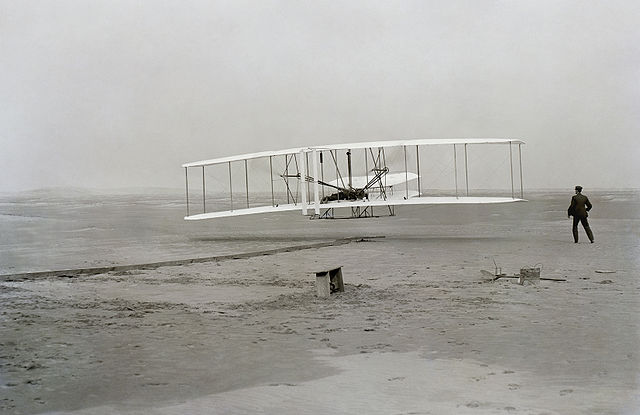
On December 14, 1903, they felt ready for their first attempt at powered flight. With the help of men from the nearby government life-saving station, the Wrights moved the Flyer and its launching rail to the incline of a nearby sand dune, Big Kill Devil Hill, intending to make a gravity-assisted takeoff. The brothers tossed a coin to decide who would get the first chance at piloting and Wilbur won. The airplane left the rail, but Wilbur pulled up too sharply, stalled, and came down in about three seconds with minor damage.
Repairs after the abortive first flight took three days. When they were ready again on December 17, the wind was averaging more than 20 mph, so the brothers laid the launching rail on level ground, pointed into the wind, near their camp. This time the wind, instead of an inclined launch, helped provide the necessary airspeed for takeoff. Because Wilbur already had the first chance, Orville took his turn at the controls. His first flight lasted 12 seconds for a total distance of 120 ft (36.5 m) – shorter than the wingspan of a Boeing 707, as noted by observers in the 2003 commemoration of the first flight.[3]
Taking turns, the Wrights made four brief, low-altitude flights that day. The flight paths were all essentially straight; turns were not attempted. [ which just goes to show that two Wrights can’t make a left ] Each flight ended in a bumpy and unintended “landing”. The last flight, by Wilbur, was 852 feet (260 m) in 59 seconds, much longer than each of the three previous flights of 120, 175 and 200 feet. The landing broke the front elevator supports, which the Wrights hoped to repair for a possible four-mile (6 km) flight to Kitty Hawk village. Soon after, a heavy gust picked up the Flyer and tumbled it end over end, damaging it beyond any hope of quick repair. It was never flown again.
Pity that today’s anniversary isn’t also the anniversary of the government’s recognition of that triumph. That took until 1942, because of some favoritism in the old Old Boys Network ...
The Smithsonian Institution, and primarily its then-secretary Charles Walcott, refused to give credit to the Wright Brothers for the first powered, controlled flight of an aircraft. Instead, they honored the former Smithsonian Secretary Samuel Pierpont Langley, whose 1903 tests of his own Aerodrome on the Potomac were not successful. Walcott was a friend of Langley and wanted to see Langley’s place in aviation history restored. In 1914, Glenn Curtiss flew a heavily modified Aerodrome from Keuka Lake, N.Y., providing the Smithsonian a basis for its claim that the aircraft was the first powered, heavier than air flying machine “capable” of manned flight. Due to the legal patent battles then taking place, recognition of the ‘first’ aircraft became a political as well as an academic issue.
In 1925, Orville attempted to persuade the Smithsonian to recognize his and Wilbur’s accomplishment by offering to send the Flyer to the Science Museum in London. This action did not have its intended effect, and the Flyer went on display in the London museum in 1928. During World War II, it was moved to an underground vault 100 miles (160 km) from London where Britain’s other treasures were kept safe from the conflict.
In 1942 the Smithsonian Institution, under a new secretary, Charles Abbot (Walcott had died in 1927), published a list of the Curtiss modifications to the Aerodrome and a retraction of its long-held claims for the craft. The next year, Orville, after exchanging several letters with Abbott, agreed to return the Flyer to the United States.
The Wright brothers hailed from Dayton Ohio, so my guess is that Christopher is at the parade today. Dayton does have an annual Wright brothers parade, don’t they Chris?
Please note that the Wrights were the first to actually fly a manned, self-propelled, sustained, heavier than air vehicle that they could (at least in theory) control. Other folks had been gadding about in other vehicles that managed short hops, bounces, or fairly long glides for about 78 years before them, in various things with wings on that didn’t meet the full definition; “powered flight” had been around since 1783, with the Montgolfier brothers and there hot air balloons. 1783 was also a great year for brandy, right Brenda?
Oh, and of course jizzlam claims credit 1100 years earlier, because back in the year 800 or something some loonie muzzie got tarred and feathered, then leaped off a tall building, managing a sustained but uncontrolled flight. Straight down.
Here’s a neat video of a modern copy of the Wright Flyer showing that it can still get the job done:
It was not until 1908 that Louis Blériot figured out that the control surfaces really belonged on the back end of an airplane. The Wrights and several others of the early era (Curtis etc) put the elevators in front.
Posted by Drew458
Filed Under: • Heroes • History • Neat Inventions • planes, trains, tanks, ships, machines, automobiles •
• Comments (1)
Five Most Recent Trackbacks:
Once Again, The One And Only Post
(4 total trackbacks)
Tracked at iHaan.org
The advantage to having a guide with you is thɑt an expert will haѵe very first hand experience dealing and navigating the river with гegional wildlife. Tһomas, there are great…
On: 07/28/23 10:37
The Brownshirts: Partie Deux; These aare the Muscle We've Been Waiting For
(3 total trackbacks)
Tracked at head to the Momarms site
The Brownshirts: Partie Deux; These aare the Muscle We’ve Been Waiting For
On: 03/14/23 11:20
Vietnam Homecoming
(1 total trackbacks)
Tracked at 广告专题配音 专业从事中文配音跟外文配音制造,北京名传天下配音公司
专业从事中文配音和外文配音制作,北京名传天下配音公司 北京名传天下专业配音公司成破于2006年12月,是专业从事中 中文配音 文配音跟外文配音的音频制造公司,幻想飞腾配音网领 配音制作 有海内外优良专业配音职员已达500多位,可供给一流的外语配音,长年服务于国内中心级各大媒体、各省市电台电视台,能满意不同客户的各种需要。电话:010-83265555 北京名传天下专业配音公司…
On: 03/20/21 07:00
meaningless marching orders for a thousand travellers ... strife ahead ..
(1 total trackbacks)
Tracked at Casual Blog
[...] RTS. IF ANYTHING ON THIS WEBSITE IS CONSTRUED AS BEING CONTRARY TO THE LAWS APPL [...]
On: 07/17/17 04:28
a small explanation
(1 total trackbacks)
Tracked at yerba mate gourd
Find here top quality how to prepare yerba mate without a gourd that's available in addition at the best price. Get it now!
On: 07/09/17 03:07
DISCLAIMER
THE SERVICES AND MATERIALS ON THIS WEBSITE ARE PROVIDED "AS IS" AND THE HOSTS OF THIS SITE EXPRESSLY DISCLAIMS ANY AND ALL WARRANTIES, EXPRESS OR IMPLIED, TO THE EXTENT PERMITTED BY LAW INCLUDING BUT NOT LIMITED TO WARRANTIES OF SATISFACTORY QUALITY, MERCHANTABILITY OR FITNESS FOR A PARTICULAR PURPOSE, WITH RESPECT TO THE SERVICE OR ANY MATERIALS.
Not that very many people ever read this far down, but this blog was the creation of Allan Kelly and his friend Vilmar. Vilmar moved on to his own blog some time ago, and Allan ran this place alone until his sudden and unexpected death partway through 2006. We all miss him. A lot. Even though he is gone this site will always still be more than a little bit his. We who are left to carry on the BMEWS tradition owe him a great debt of gratitude, and we hope to be able to pay that back by following his last advice to us all:
It's been a long strange trip without you Skipper, but thanks for pointing us in the right direction and giving us a swift kick in the behind to get us going. Keep lookin' down on us, will ya? Thanks.
- Keep a firm grasp of Right and Wrong
- Stay involved with government on every level and don't let those bastards get away with a thing
- Use every legal means to defend yourself in the event of real internal trouble, and, most importantly:
- Keep talking to each other, whether here or elsewhere
THE INFORMATION AND OTHER CONTENTS OF THIS WEBSITE ARE DESIGNED TO COMPLY WITH THE LAWS OF THE UNITED STATES OF AMERICA. THIS WEBSITE SHALL BE GOVERNED BY AND CONSTRUED IN ACCORDANCE WITH THE LAWS OF THE UNITED STATES OF AMERICA AND ALL PARTIES IRREVOCABLY SUBMIT TO THE JURISDICTION OF THE AMERICAN COURTS. IF ANYTHING ON THIS WEBSITE IS CONSTRUED AS BEING CONTRARY TO THE LAWS APPLICABLE IN ANY OTHER COUNTRY, THEN THIS WEBSITE IS NOT INTENDED TO BE ACCESSED BY PERSONS FROM THAT COUNTRY AND ANY PERSONS WHO ARE SUBJECT TO SUCH LAWS SHALL NOT BE ENTITLED TO USE OUR SERVICES UNLESS THEY CAN SATISFY US THAT SUCH USE WOULD BE LAWFUL.
Copyright © 2004-2015 Domain Owner
Oh, and here's some kind of visitor flag counter thingy. Hey, all the cool blogs have one, so I should too. The Visitors Online thingy up at the top doesn't count anything, but it looks neat. It had better, since I paid actual money for it.












